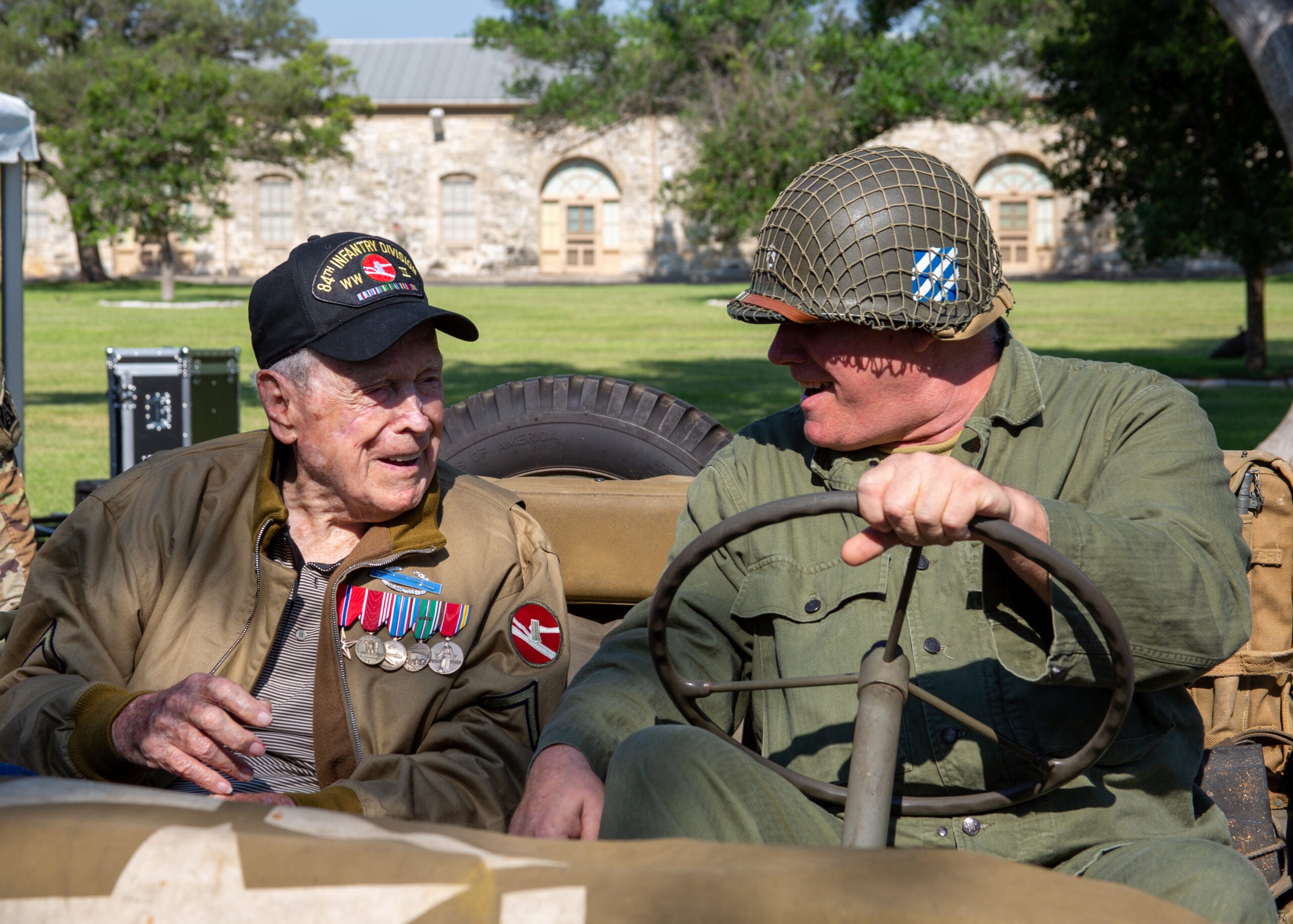Better late than never: A 97-year-old Army veteran who distinguished himself in combat during World War II has finally been presented the Bronze Star Medal, Combat Infantryman Badge, and other awards he earned some 78 years ago.
“Pfc. Reid Clanton spent more than 250 days in combat across France, Belgium, Germany, and more than 90 days of direct combat in France,” said Maj. Gen. William Prendergast, deputy commanding general of Army North. “The Army North motto is ‘Strength of the Nation’ and sir, you are a shining example of what makes this country so strong.”
Clanton was presented on Monday with the Bronze Star (the fourth-highest military award for bravery), the Good Conduct Medal, American Campaign Medal, European-African Middle Eastern Campaign Medal with three bronze service stars, World War II Victory Medal, and the Combat Infantryman Badge.
According to an Army news release, the former private first class recently returned for an awards ceremony at Fort Sam Houston, Texas, the base from which he was discharged after the war. Although he met all the requirements, Clanton never received the awards due to an “administrative error,” according to the news release; a veteran advocate said it was “all too common” for soldiers to leave the service after the war without the medals they were due.

Born in 1924, Clanton joined the Army on May 19, 1943, and went through training in Texas and Louisiana before deploying overseas as a forward observer a year later. Usually operating far ahead of friendly positions, his job was to scout for the enemy and then radio for artillery fire, which was considered “one of the most dangerous positions” of the war, according to the news release.
He had his first taste of combat on June 6, 1944, as he landed amid heavy machine gun and artillery fire with the 29th Infantry Division on Omaha Beach in Normandy, France. About 3,000 casualties were recorded on the first day, making Omaha the “bloodiest” beach landing of the D-Day invasion that finally breached Hitler’s “Fortress Europe.”
“Ashore, facing us, were more enemy troops than we had in our assault waves. The advantages were all theirs, the disadvantages all ours,” war correspondent Ernie Pyle wrote of the soldiers landing with the 1st and 29th Infantry Divisions, describing German positions that had been prepared for months, numerous obstacles and hidden ditches, floating mines offshore, and deadly accurate machine gun and artillery fire covering “every foot” of the beach. “And yet we got on,” Pyle wrote.
Once off the beach, Clanton fought in the treacherous hedgerows of the French countryside and continued into Belgium. By December 1944, he was in the Ardennes Forest during the “Battle of the Bulge” with a group of soldiers trying to find a German 88 mm heavy artillery position that was raining down shells on American troops. At first crawling in a protective ditch, Clanton eventually had to expose himself to enemy gunfire so he could call for fire on the 88. He destroyed the artillery position despite bullets zipping by his head.
“War is hell. We should try to prevent World War III. It’s not the thing to do,” Clanton said at the ceremony. “We need to get along with each other, understand each other and help each other. We don’t need any more war stuff.”
The latest on Task & Purpose
Want to write for Task & Purpose? Click here. Or check out the latest stories on our homepage.
